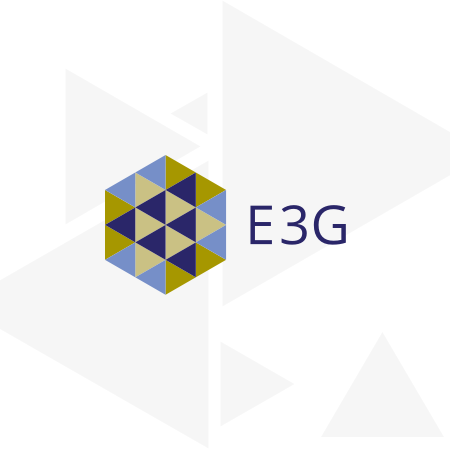A new E3G report argues the Asian Development Bank (ADB) must refocus efforts to align with global climate goals.
The ADB is the regional development bank for Asia and the Pacific, and its operations in 2016 exceeded the $30 billion mark for the first time as regional demand for development finance continues to grow. The ADB is currently preparing a new ‘Road to 2030’ strategy which will take into account the Sustainable Development Goals and the Paris Agreement on climate change. With the ADB's 50th Anniversary Celebration also taking place in 2017, it now has a unique opportunity to review and follow best practices to ensure its investments are aligned with the global goals and climate change needs. The ADB is in a good position to integrate its ‘triple bottom line’ of growth, inclusion and environmental sustainability into its operations. As the ADB is now developing a Climate Change Operational Framework, this is a great opportunity to ensure it takes on the best practices of the other Multilateral Development Banks (MDBs).
Climate change is expected to adversely affect the sustainable development capabilities of most Asian developing countries. At the same time, the vast majority of global coal plant construction is in Asia. In order to meet the commitments made in the Paris Agreement, the growth in coal power generation must be reversed. While the ADB has made progress over recent years, the new ADB strategy must ensure it catalyses a regional shift from coal to clean energy. A failure to act now risks undermining the ADB’s ability to fulfil its mission to help its developing member countries reduce poverty and improve quality of life. Accelerated action to reduce emissions and prepare for the impacts of climate change must now be at the core of the ADB’s agenda.
Governments decided under the Paris Agreement that finance flows must be consistent with a pathway towards low greenhouse gas emissions and climate-resilient development. This is needed to achieve the goal of limiting the global temperature rise to well below 2°C (and striving for 1.5°C) to avoid dangerous climate change. As a good steward of public capital, the ADB needs to understand the implications of high-carbon investments in order to effectively help client countries. Moreover, the Paris commitments represent a huge climate investment opportunity in emerging economies, as energy markets are starting to transition away from supporting outdated, fossil-dependent models of development.
Report recommendations include:
- ADB must refocus efforts to become an enabler of low-carbon, climate-resilient and inclusive development in Asia, catalyzing a regional shift from coal to clean energy. Given its experience in the region, the ADB has a particular role in setting standards for high quality infrastructure that can enable sustainable development.
- ADB should renew its relationship with country members and fully integrate climate change into its country partnership work, in response to growing country demand. ADB must support member countries to further develop national low carbon investment plans, and increase country capacity to reduce emissions over subsequent commitment periods. There is an opportunity for ADB to establish itself as the expert in the field.
- ADB should adopt a more ambitious clean energy target, particularly given the regional trends in the growth of renewable energy.
- The ‘Road to 2030’ strategy also offers an opportunity to introduce new tools to assess the case for investment in projects that risk locking-in high levels of emissions and dependence on fossil fuels. ADB needs to better screen high carbon project proposals for compatibility with climate change commitments, including by considering CO2 emissions over the lifetime of a potential project. In doing this, it should match its peers in the World Bank Group, European Bank for Reconstruction and Development (EBRD), and European Investment Bank (EIB), which have already introduced policies restricting funding to coal projects. ADB should also help partner countries strengthen their project appraisal capacity to incorporate factors such as air pollution and asset stranding.
- ADB should actively seek out projects – including new projects in the early stages of development. In this regard, ADB should continue to scale up its use of innovative instruments such as guarantees to enable private sector actors to co-invest and scale up financing for transformative infrastructure in the region.
- ADB should follow the lead of its peers in reporting on its emissions across the portfolio, and go further by applying a portfolio-level emission reduction target.
Senior Policy Advisor, Dr. Helena Wright, says
The report shows ADB’s current clean energy target lacks in ambition. ADB must ensure that it’s new strategy catalyses a clean energy shift in Asia. There is a need for a more ambitious program to match growing demand. This will be vital to ensure the world moves to a safe pathway to avoid dangerous climate impacts.

